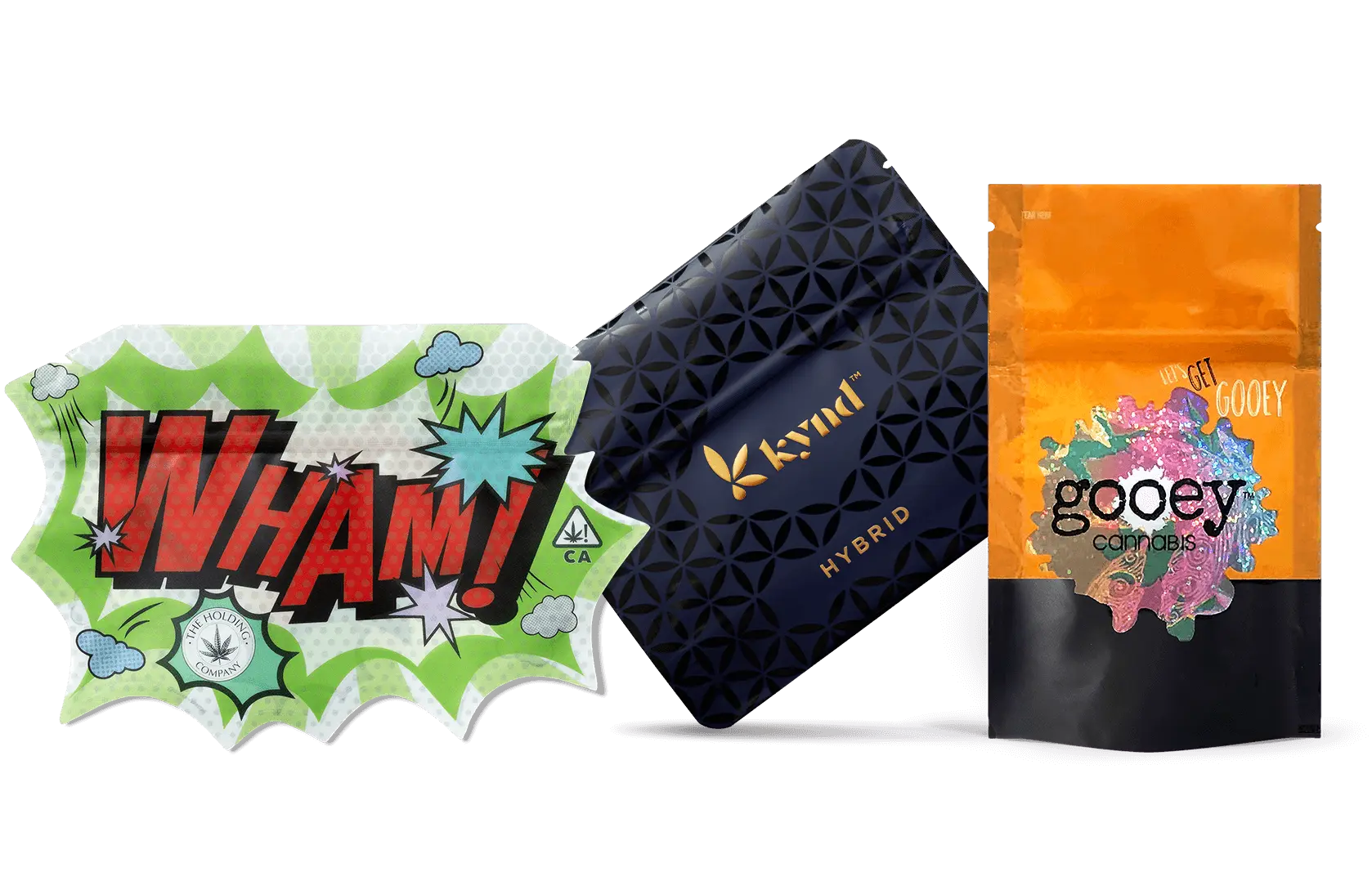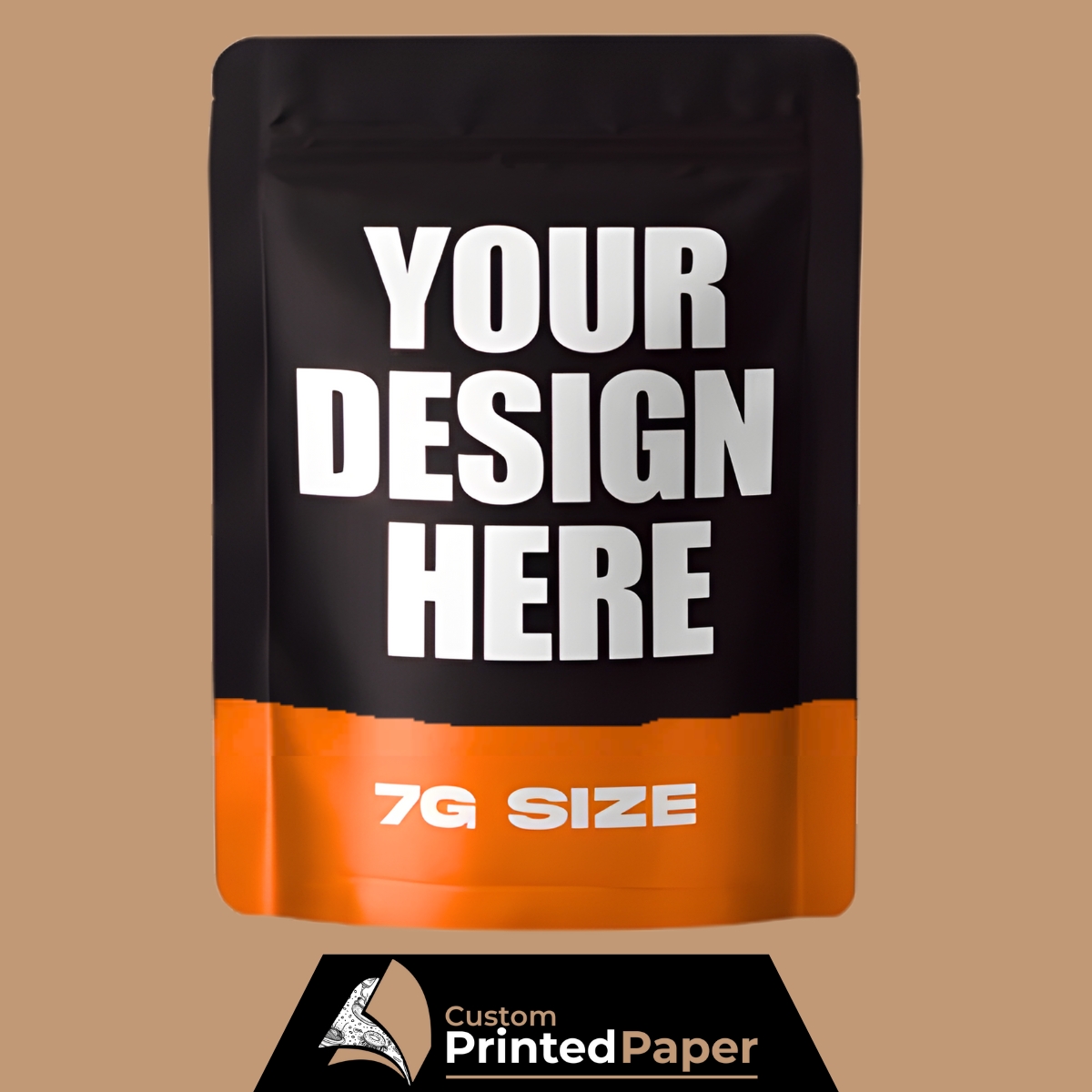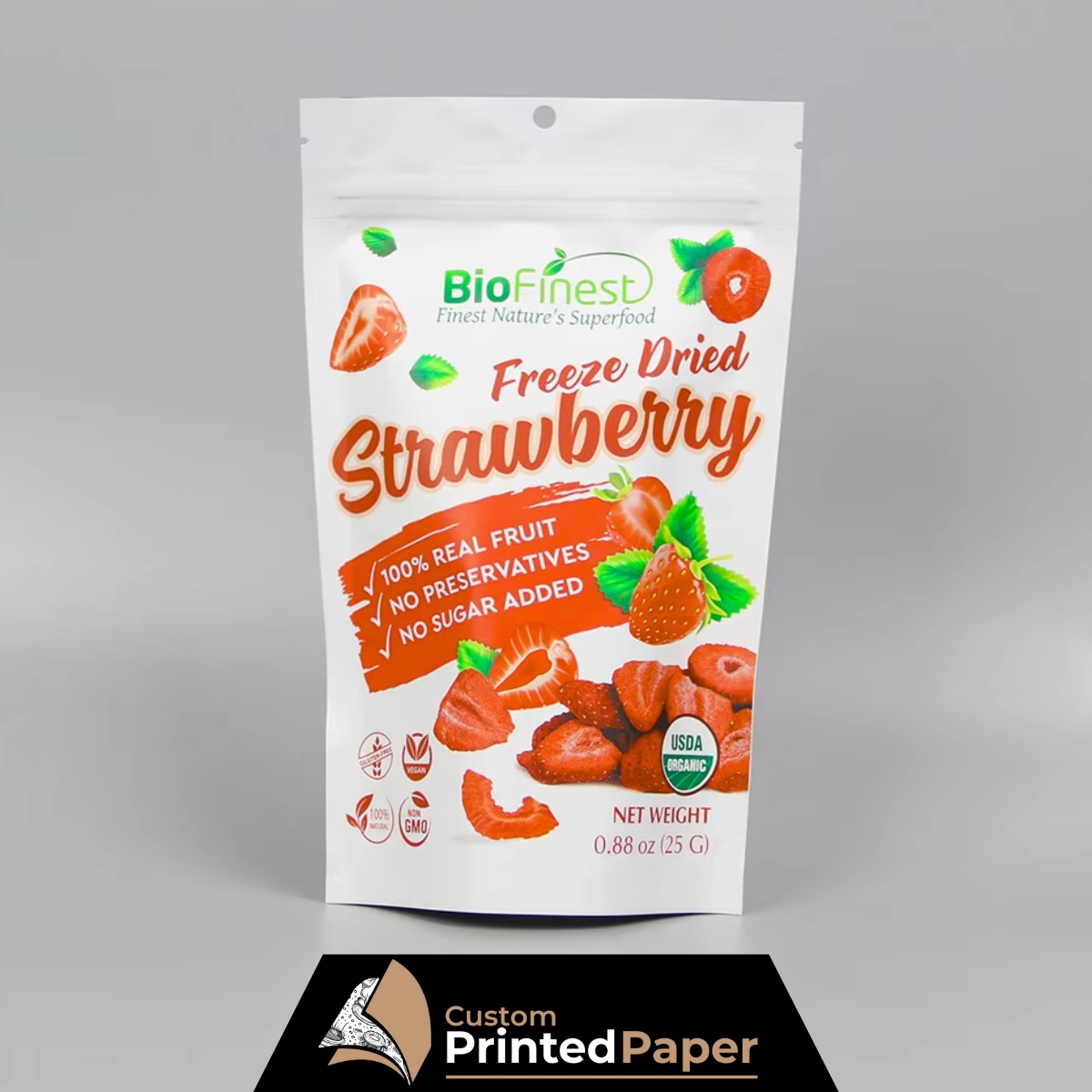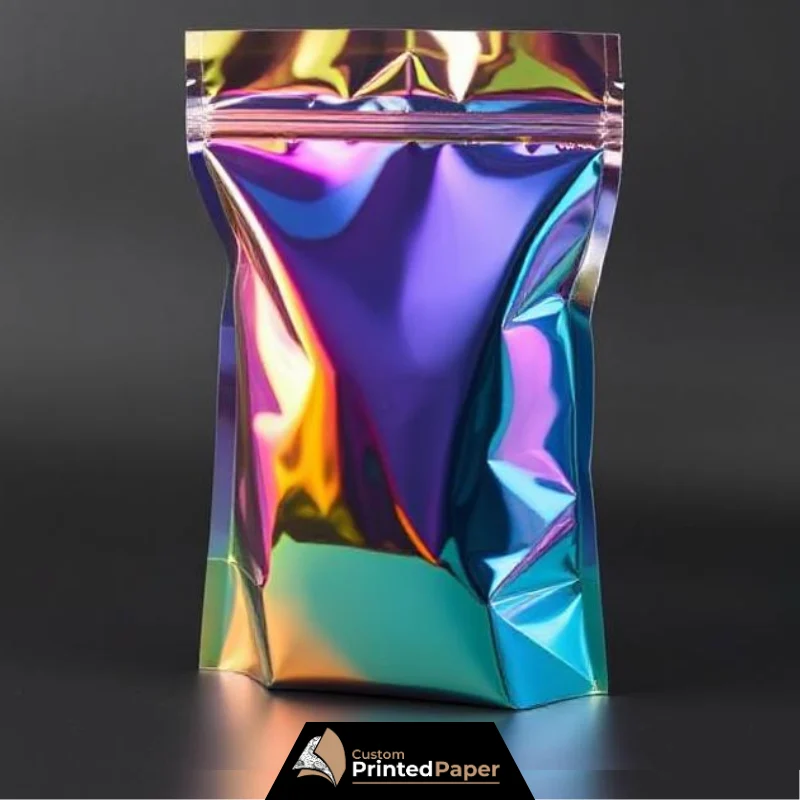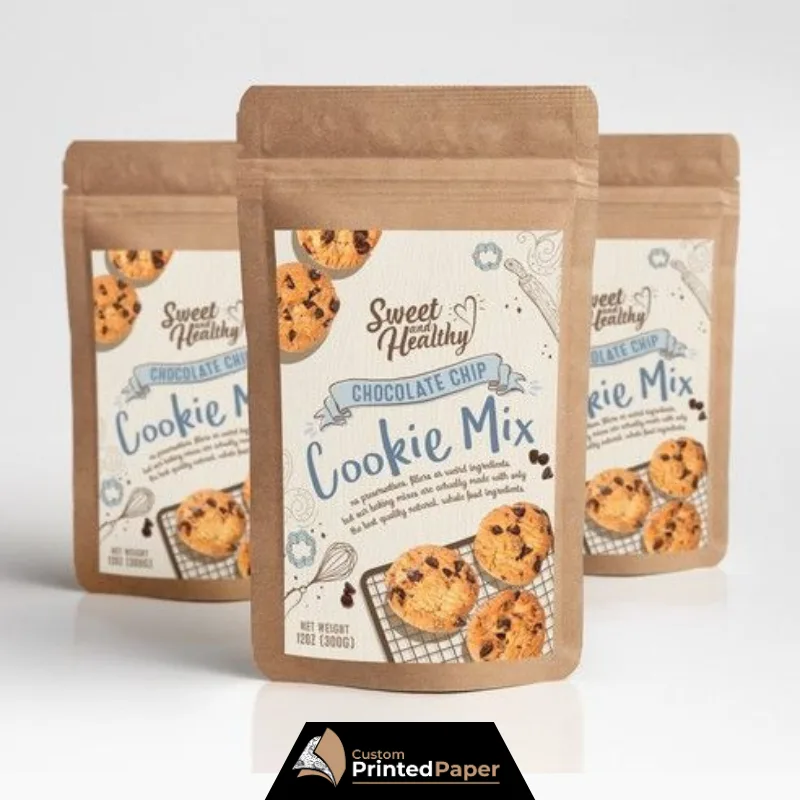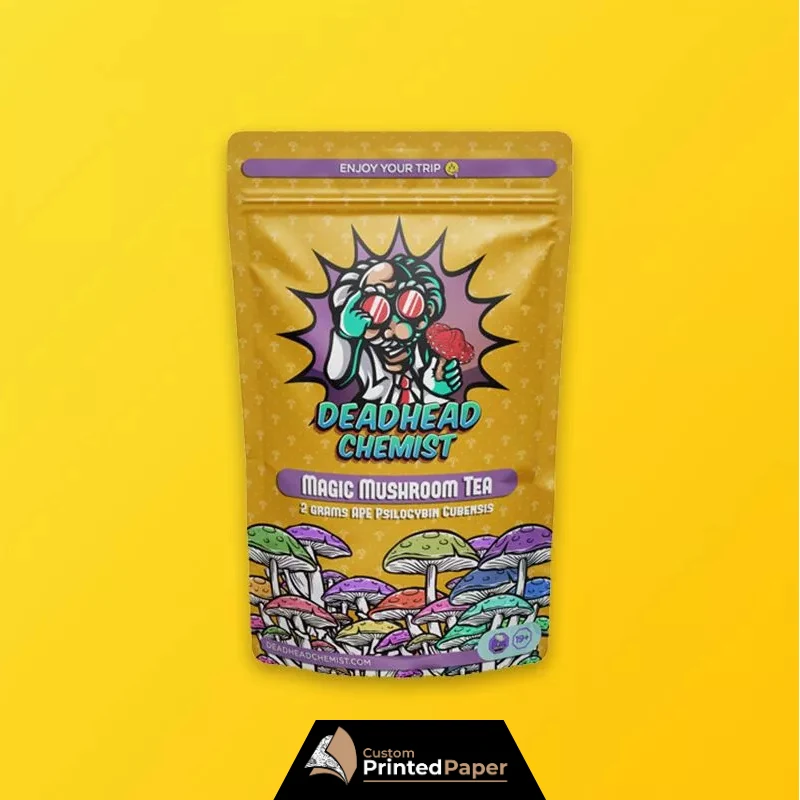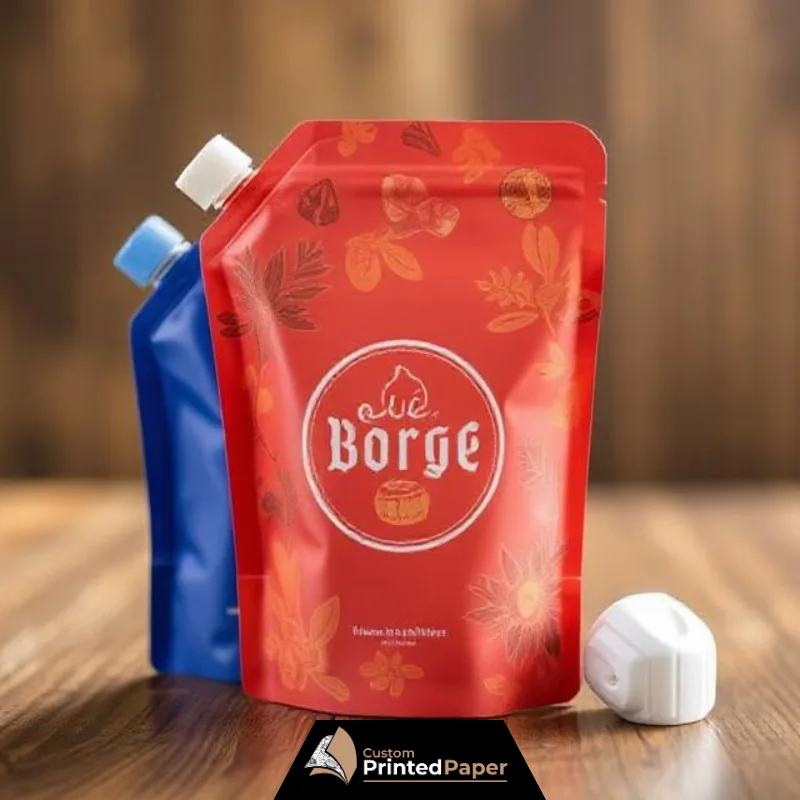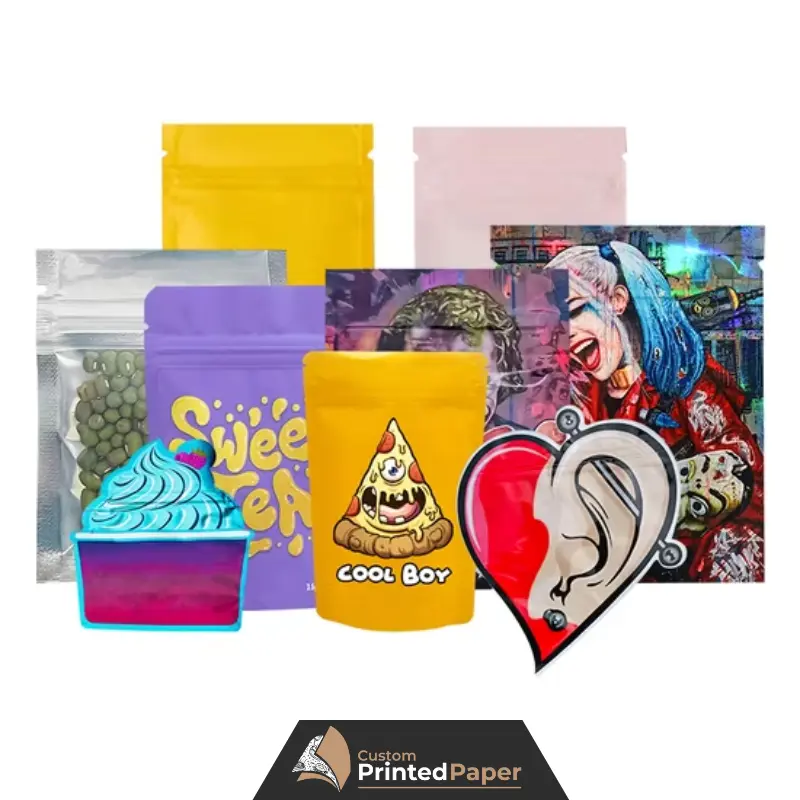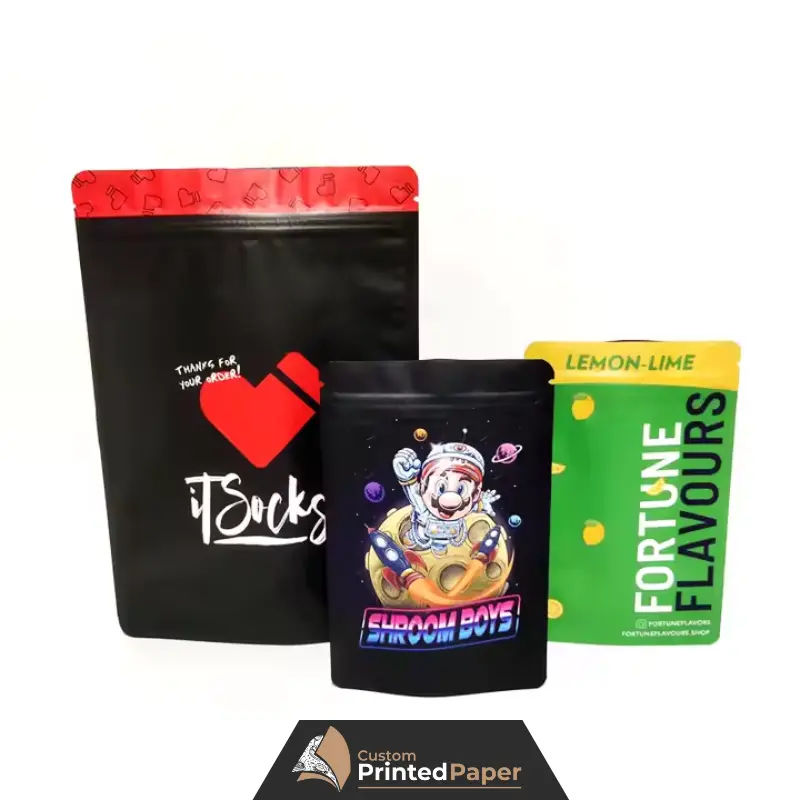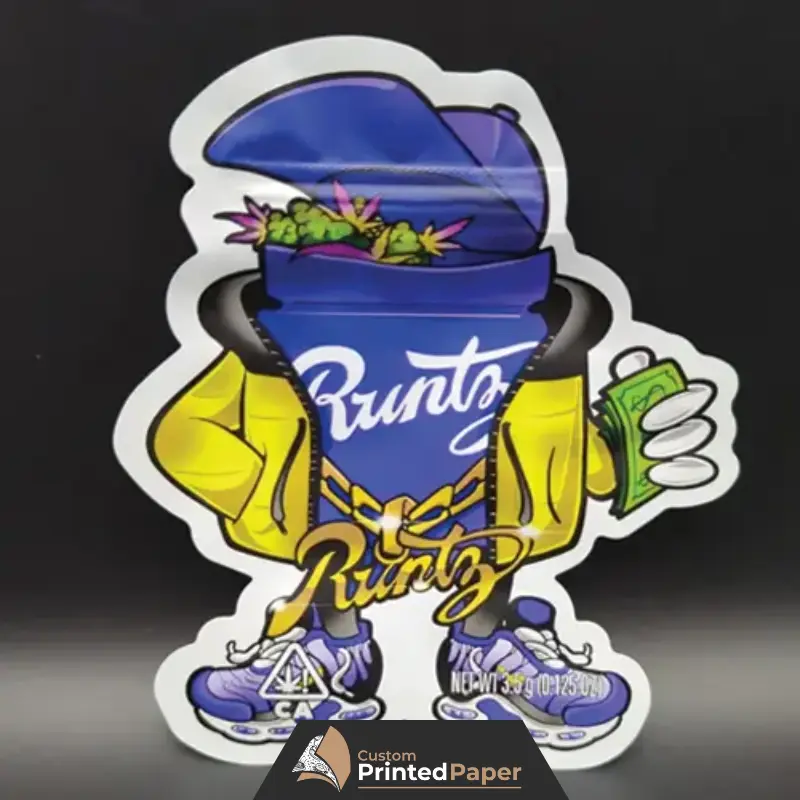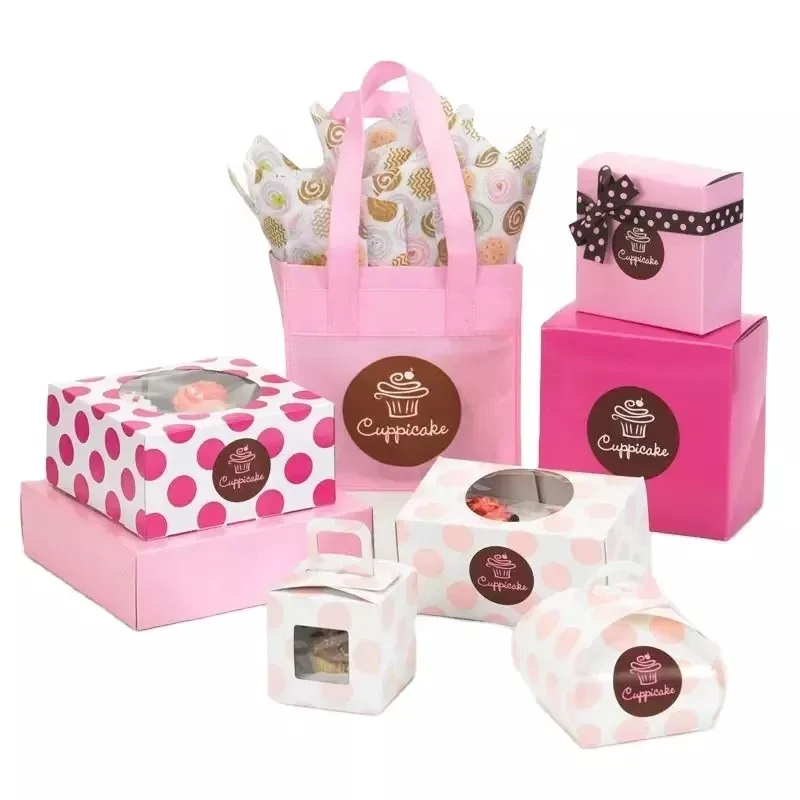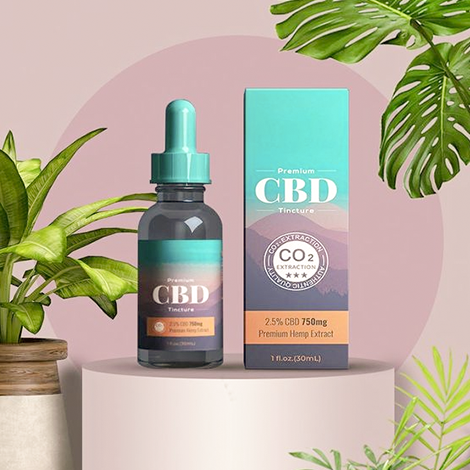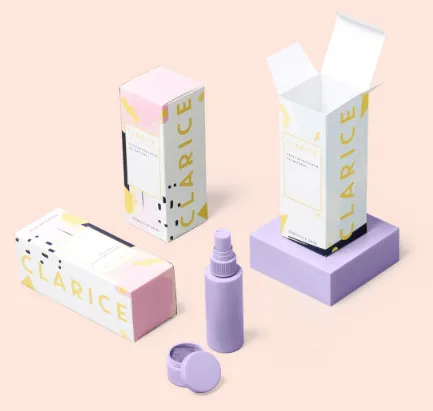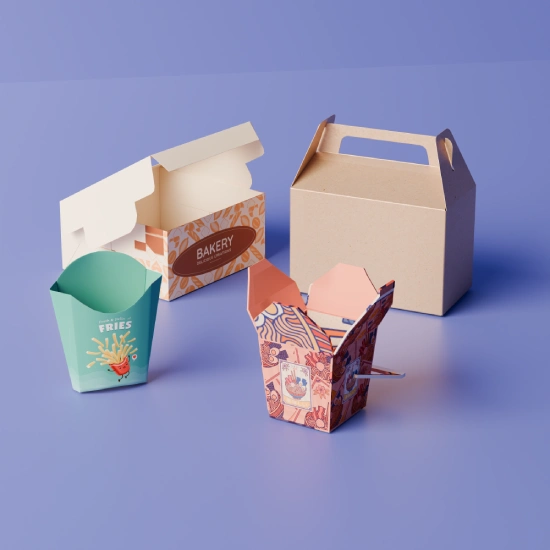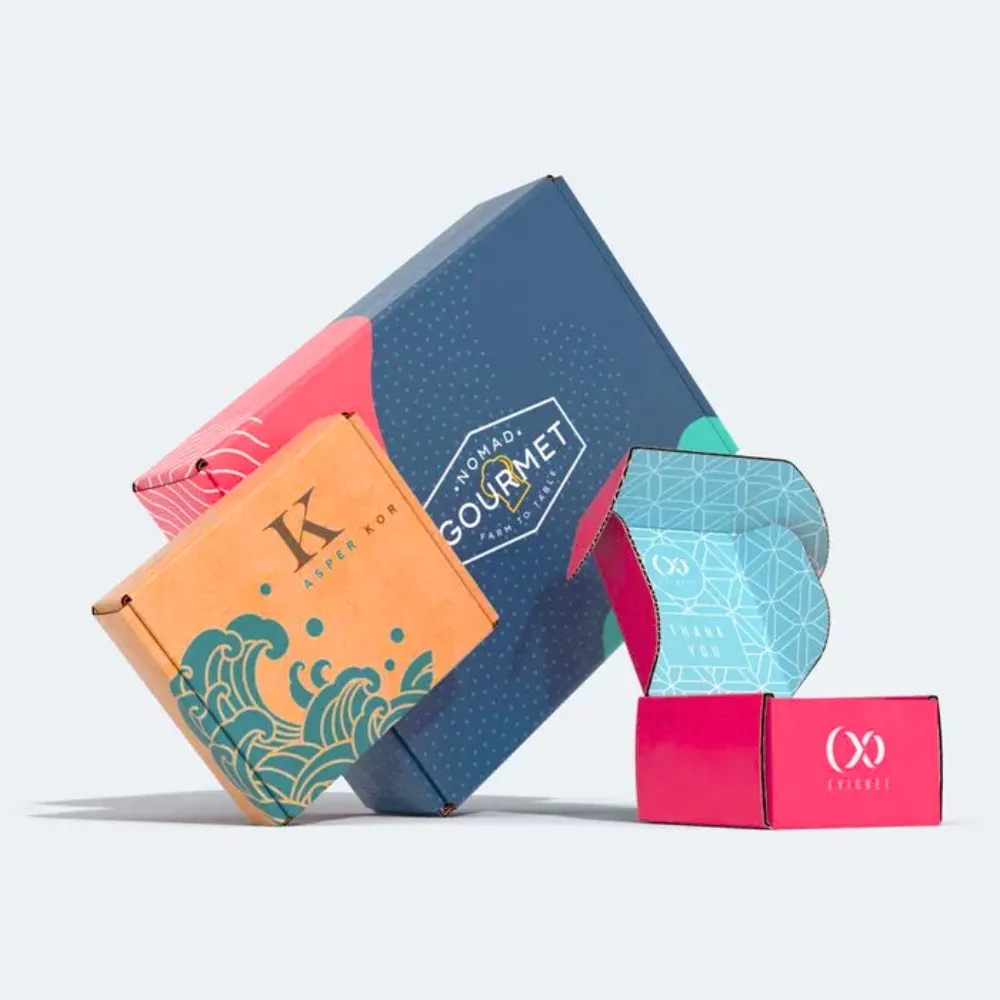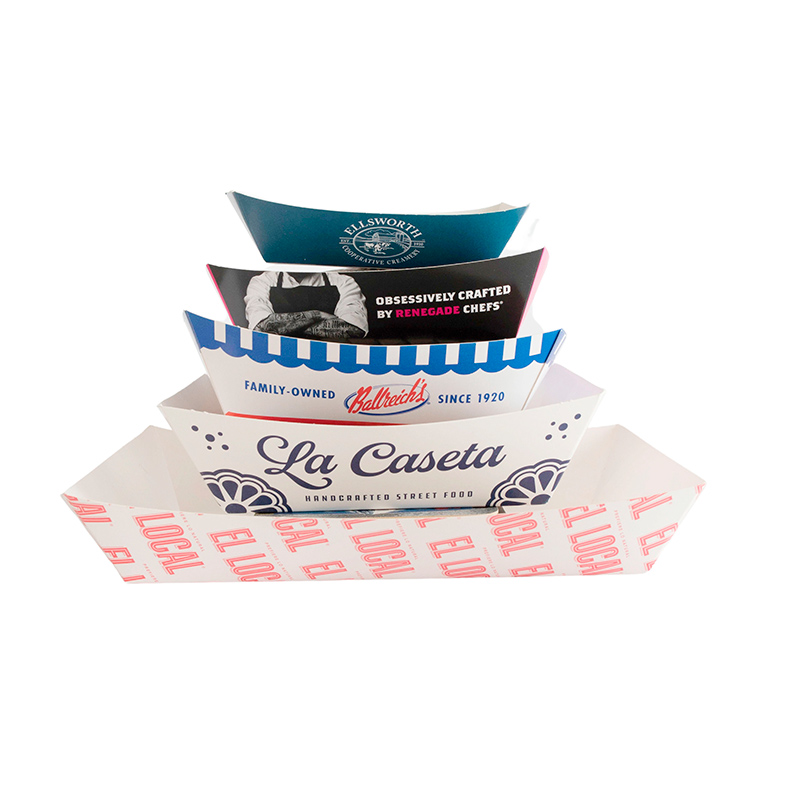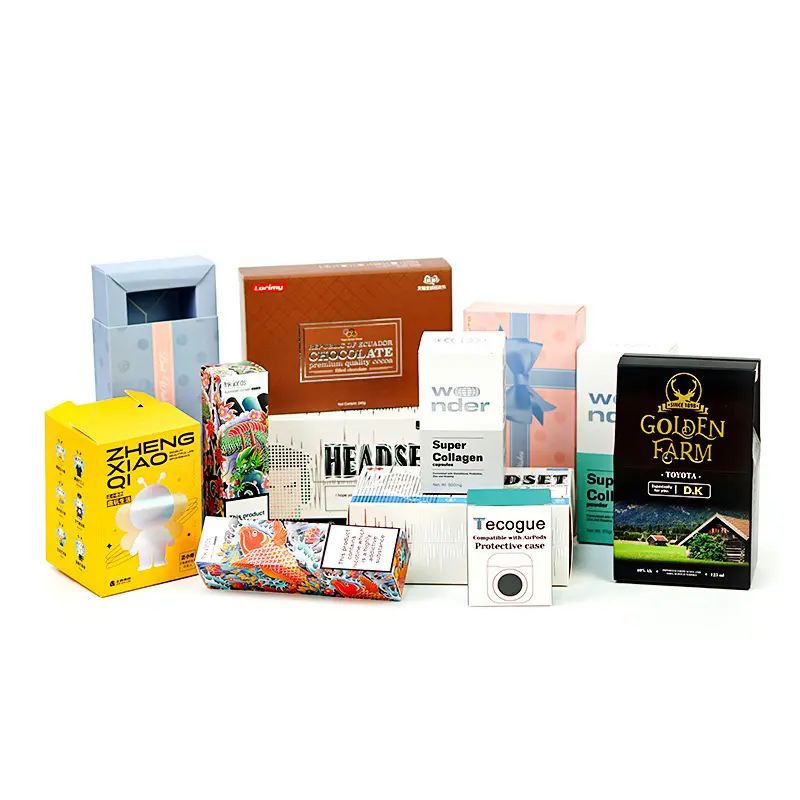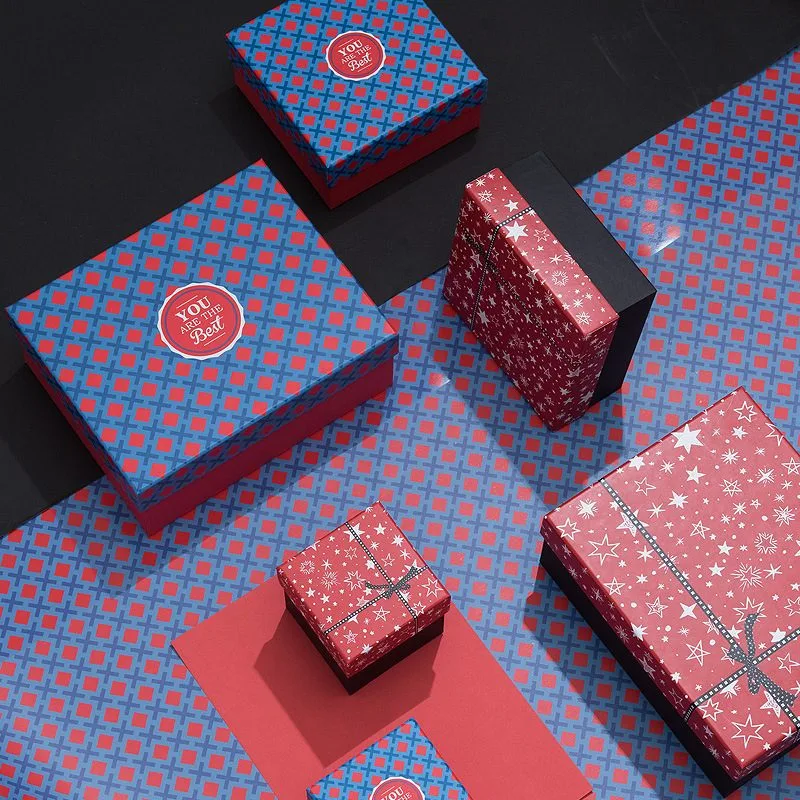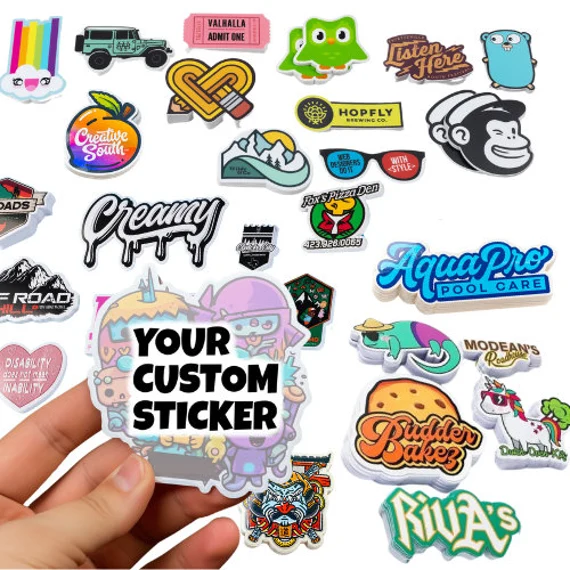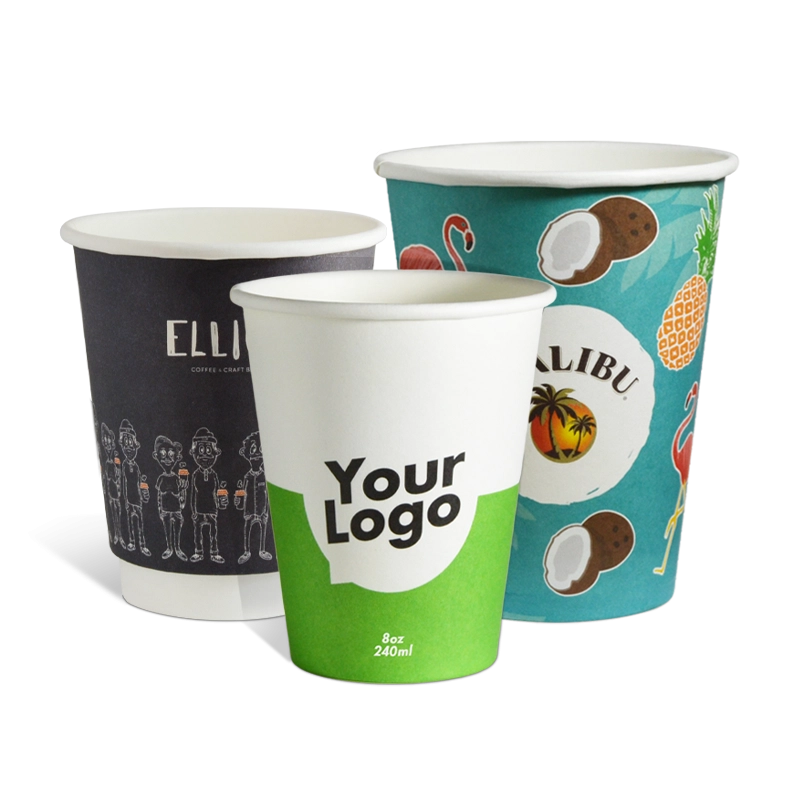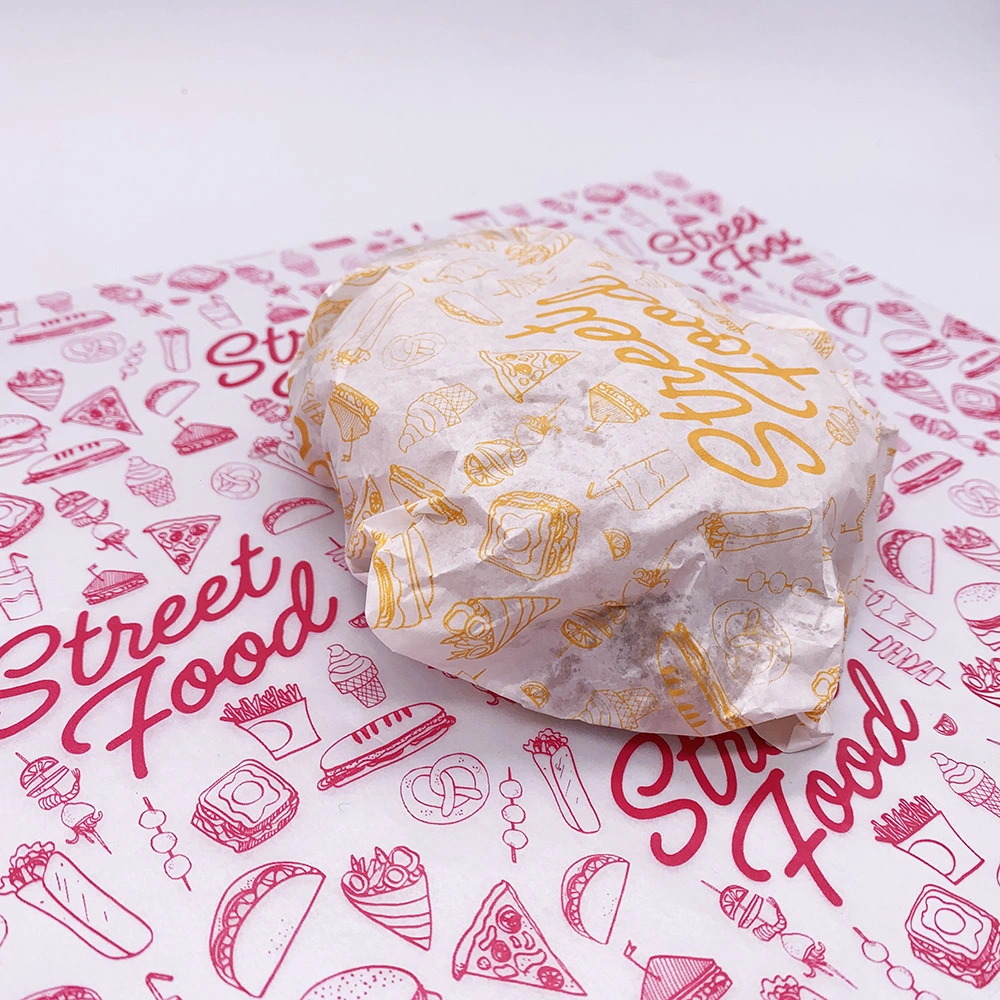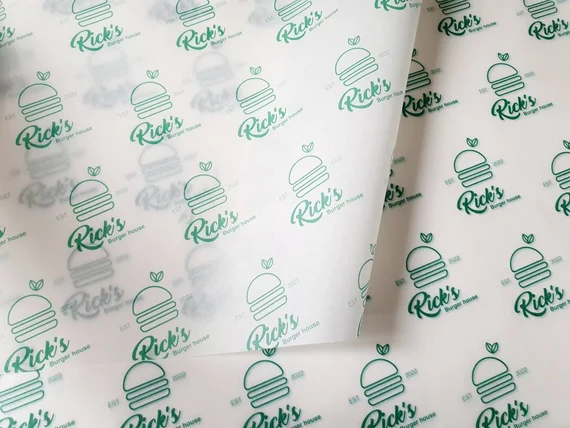Explore Our Wide Range In Custom Mylar Bags Canada
Q: What are Mylar bags?
A: The extrusion process creates Mylar bags, which present durable, flexible functionality as polyester material-based products. Mylar bags serve multiple purposes with excellent barrier features because manufacturers use them to package various products, including:
- Pharmaceutical items
- Food products
- Weed
- Herbs
- Skincare items
Q: What are Mylar bags made of?
A: Custom Mylar bags exist as polyester film products which manufacturers consider biaxially oriented polyethylene terephthalate (BOPET). Originally produced through extrusion the polyester material sheet produces flexible materials which demonstrate exceptional barrier capabilities.
Q: What type of Mylar bags can you manufacture?
A: The production at our manufacturing facility extends to various heat-sealed and flat pouch mylar bag designs. Each style within our manufacturing capabilities can be selected according to current requirements. Our company provides standard options, including:
- Vacuum seal bags
- Smell-proof Mylar bags
- Zipper bags
- Mylar bags with side gussets
Q: Are all Mylar bags made with aluminum?
A: Place-based Mylar products do not include aluminum as a material component. The mylar bags include aluminum layers as additional defense features according to buyer specifications for smell-proof applications.
Q: What mil is best for Mylar bags?
A: Because mylar bags display such thin dimensions we must select a small unit system for measurement. The technique to determine Mylar bag thickness relies on measuring thousandths of an inch using mils. Product protection needs mylar containers built with a 5 to 7 mil thickness that ensures sufficient durability.
Q: What is the difference between 5 mil and 7 mil Mylar bags?
A: The main distinction exists in their thickness measurements. The thinness of a bag with five mil thickness exceeds that of a seven mil bag. Different products may require either 5-mil or 7-mil bags yet they both contribute effectively to product protection.
Q: What are mylar bags used for?
A: Using Mylar bags enables multiple application solutions for product packaging to offer protection even without increasing the packaging weight. Mylar bags serve extended product protection because they form an outstanding barrier that safeguards contents. Mylar bags find several applications, ranging from:
- Weed packaging
- Herb and spice packaging
- Small electronic product packaging
- Food packaging
- Pharmaceutical products packaging
Q: How to seal Mylar bags?
A: The available end closures for Mylar bags exist in more than one variety. There are two different types of bag closures for Mylar bags including zippers and the press-to-close method.
Q: Are Mylar bags smell-proof?
A: Mylar bags provide both smell-proof properties and effective odour barriers to keep contents safe from odorous contaminants. Selecting Kraft material alone as your bag content will not provide adequate smell protection. The smell protection of smell depends on choosing Kraft material with aluminum lining on the inside of the bag.
Q: How to use Personalized Mylar bags?
A: The proper implementation of Mylar depends on the purpose for which you obtained it. Frozen food stored in Mylar bags needs placement inside the freezer before use. You can store your spices inside Mylar bags at room temperature although their storage location depends on the intended use of your Mylar bag.
Q: Can you vacuum seal Mylar bags?
A: Vacuum-sealed Mylar bags exist for users who need complete air removal to create an air-tight storage system. The vacuum sealing method helps protect various items such as food and electronics through improved defense.
Q: Can you reuse Mylar bags?
A: Mylar bags present durability features that enable multiple reuses of the storage containers. The product’s initial purpose remains single-use but reusing them becomes possible when both a proper condition exists and no contamination concerns exist for the product stored within.
Q: Are Mylar bags recyclable?
A: Some Mylar bags contain plastic and aluminum layers that need specific recycling methods in order to be recycled.
Q: Are Mylar bags toxic?
A: The food-safe material forming Mylar bags shows zero toxicity alongside being inert. The material used to produce these bags remains safe for food purposes and emits no dangerous substances.
Q: What are the properties of Mylar bags?
A: The tensile power of Mylar bags combines with their superior obstacle properties because they stop light and moisture penetration. Protecting your product from oxygen is possible when you select vacuum-sealed Mylar as an option.
Q: Does Mylar shrink when heated?
A: Mylar bags produce constriction when subjected to heating conditions. Mylar bags possess this useful characteristic which becomes vital during heat-sealed packaging operations. The material tightly encloses the product or closing edges from the opening to provide guarding measures.
Q: Does Mylar protect against UV?
A: Mylar bags offer defense against UV rays, which stops sensitive products from deteriorating, alongside preventing spoilage.
Q: Are Mylar bags polypropylene?
A: BOPET materials comprise the construction of these bags, although this material derives from different polyethylene forms. The unique properties that result from extruding polyethylene constitute its final form.
Q: How long will Mylar bags last?
A: The proper storage environment enables Mylar bags to last for extended periods. The extended lifespan of these bags depends primarily on two elements: their thickness levels and the external storage environment quality.
Q: Do Mylar bags leach chemicals into food?
A: The food storage process in Mylar bags stays contaminant-free because the material does not emit any chemicals. Food-safe bags consist of non-toxic materials that producers label to endorse their food integrity.
Q: What should you not store in Mylar bags?
A: It is not suitable to keep highly moist food items in Mylar bags. The freezer provides a suitable storage environment for food saved in Mylar bags. The bag is found to be primarily used to protect dry food items from spoilage.
Q: Are Mylar bags FDA-approved?
A: The FDA has approved Mylar for food packaging when its intended application is to protect food items. The food-safe qualities of Mylar bag material remain widespread across its general applications.
Q: What is a stand-up pouch?
A: You can identify a stand-up pouch as a form of Mylar bag that supports its own structure when filled with products. Food elements, together with selected retail goods, use stand-up pouches as their packaging form.
Q: What is a tear notch?
A: A tear notch serves as a designed slit at the top of Mylar bags for simple manual opening without requiring tools.
Q: Are there eco-friendly options for Mylar bags?
A: Customprintedpaper business provides Kraft-made, eco-friendly Mylar bags. The original material utilized to manufacture Mylar bags is suitable for recycling.
Q: What are Doypacks?
A: The gusseted, along with stand-up characteristics, define Dopacks as a particular form of Mylar bags. The designed features enable these bags to expand into standing positions on retail shelves. The food packaging market extensively utilizes these bags, together with other products, for consumer needs.
| Bag Style | Custom Mylar Bags |
| Dimension (L + W + H) | All Custom Sizes & Unique Shapes |
| Quantities | Minimum Order Quantity is 100 Pieces |
| Paper Stock | BoPET (biaxially-oriented polyethylene terephthalate) film, 89 µ to 178 µ (or 3.5 mils up to 7 mils) |
| Printing | No Printing, CMYK, CMYK + 1 PMS color, CMYK + 2 PMS colors |
| Finishing | Gloss Lamination, Matte Lamination, Gloss AQ, Gloss UV, Matte UV, Spot UV, Embossing, Foiling |
| Included Options | Die Cutting, Gluing, Scored, Perforation |
| Additional Options | Zipper, Hanging holes, Tear Notch, stand-up feature, child-resistant lock |
| Proof | Flat View, 3D Mock-up, Physical Sampling (On request) |
| Turnaround | 18-22 Business Days |
| Shipping | Shipping Charges Not Included, Shipped Flat |

Customized Style

Customized Printing

Competitive Price

Free Shipping
Unlimited Options For Custom Black Mylar Bags

Offset Print
If you’re looking for large-volume packaging materials, choose offset printing! This printing method produces clean, crisp, and brilliant results. It uses plates to transfer ink to paper, so it is economical for printing in bulk. The process provides accurate color, professional quality, and an outstanding look and feel, which is ideal for cutting custom box designs.

Digital Print
Digital printing works well for short runs and quick turn times. It doesn’t use printing plates, but instead prints directly from a computer file. It is cheap for small amounts and gives good resolution. It’s ideal for custom designs, variable data or limited edition packaging that requires speed and flexibility.

UV Print
UV printing is a process that uses ultraviolet light to dry and cure the ink as it is printed. It easily operates on traditional and non-traditional materials. This process adds to the visual appeal of such packages, as well as their durability, and packages that require a combination of both texture and shine are perfect candidates for such execution.

Pantone
Pantone printing is based on a standardized color matching system to guarantee an exact color match between jobs. It’s great for keeping brand colors perfect. Pantone ink is mixed using Pantone formula guides developed through spot printing for color accuracy that is reported as second to none. For luxury packaging that demands trustworthy, uniform, and sumptuous color from the start.

C1S
C1S is an acronym for “Coated One Side,” as the paperboard is glossy on one side and uncoated on the reverse. It is wonderful in packaging where you need a printed, high-end, printable side outside, and you may want the inside to be writable or matte. Perfect for handcraft, small business and so on, ideal for packaging boxes, shelves, product tags with a polished look.

C2S
C2S, which stands for “Coated Two Sides”, has a smooth and shiny coating on both sides of the paperboard. This is why it is ideal for stunning full-color printing, regardless of whether you are an individual or a company. Retail packaging, brochures, and cosmetics boxes that require a high-quality, high-gloss finish both inside and out use C2S.

White Kraft
White Kraft is similar to traditional Kraft, but with a printable white surface. It features a crisp white surface that produces sharp and clear prints, making it perfect for high-quality images. This is a material commonly used to manufacture sustainable packaging, which is required to have attractive prints for a professional brand image.

Kraft Paper
Kraft paper is natural brown and unbleached. Thai material is derived from wood pulp and is recyclable. Companies that want to attract eco-conscious consumers prefer Kraft material. It has a rough texture, which is perfect for handcrafted items for a rustic look and protective packaging.

Coated Kraft (CCK)
This paper is brown Kraft with a smooth, white clay-coated surface that enhances the appearance of whatever you print on it. It offers a sleek look that is ideal for graphics, prints and text branding. This hybrid design is perfect for packaging that requires both sustainability and sharp visual branding.

Color Woodfree
Color Woodfree paper has a smooth dyed surface that is free of wood fibres, for a clean finish. It is typically acid-free, and both image and color remain crisp. Ideal for presentation packaging, greeting cards, and custom box lining, where a consistent, solid color and luxurious finish are needed.

CCNB
CCNB (Clay Coated News Backboard) is made from recycled paper and has a clay-coated white backing for printing. The back remains gray or brown, preserving its eco-friendly nature. It is a very cost-effective substrate and is used extensively in folding cartons, retail packaging, and food service boxes, where low printing costs and moderate strength are the primary concerns.

Black Cardboard
Black cardstock is 100% black for a rich look that is both professional and elegant. It’s rigid and robust. It creates exceptional luxury product boxes and helps in premium branding. The materials’ smooth and matte surface is suitable for foil stamping and other premium finishes to add class and quality.

Glossy Lamination
Glossy lamination is used to give a shiny surface to the custom boxes. This coating is also an excellent option to protect the material from scratches. If you want to give your boxes a professional finish and protection from scratches, then gloss lamination is an ideal option. The high quality of the lamination protects the packaging material from moisture and enhances its longevity.

Matte Lamination
The covering is a matte lamination to give a smooth surface with a non-glossy finish, with a premium feeling. It can lower glare and has a soothing quality to particular colors. This finish is frequently used when a modern, subtle appearance is required and a sound, protective barrier is necessary to help resist smudging, light scratching and light abrasion while still offering the look of natural wood grain.

Soft Touch Lamination
The velvet-like feel makes it soft to the touch, lamination and creates an amazing tactile sensation. The surface feels good and is easy to hold. It increases tactile interaction and reinforces a brand message with elegant visuals, yet it is still durable; resists moisture, wear, and. damage during handling.

Anti-scratch Lamination
Anti-scratch lamination resists scratches, prevents scratches, and reduces the visibility of scratches. It holds up better with dust. This finish is also excellent for packaging applications in which the item needs to be kept in prime condition via handling and shipping, and for the retail shelf, where resistance to wear and durability are a must for on-shelf appearance and quality control.

UV Varnishing
UV Varnishing is a high-gloss coating that adds depth and appeal to the printed image. Cured with Ultraviolet light to be hard and ready to use. This process creates a very distinctive, eye-catching appearance and provides additional protection. It also has the added benefit of hiding light scratches, fingerprints and dirt.

Machine Varnishing
Machine varnishing provides the packaging with an even finish that is applied during production. It beautifies your surfaces and lasts up to 15 years. Its finish is consistently good on large runs, and provides for good smoothness, clarity, and slight gloss increase as well as improved resistance to minor wear and dulling over time.

Calendering Varnishing
Varnishing calendering is the process that gives gloss and smoothness with heat and pressure. It also helps to crisp up printed detail and feels more professional. This process enhances details and gives an inviting feel to the printed product for premium quality presentation packaging.

Water-Base finishing
Water-based coating offers a protective and environmentally safe coating that is also strong and long-lasting. It provides a matt/natural or gloss/soft gloss finish effect without being applied using hazardous materials. This option is perfect for companies that value environmental consciousness and are in need of a smooth surface that is reflective as well as protective.

Water Base Ink
Ecologically friendly water-based ink that is non-toxic and gentle on skin. It is suitable for different kinds of printing processes, including superior carton printing quality.

Soy Ink
Soy ink is manufactured with soybeans and is sustainable in nature. This ink has the ability to give vibrant colors and impactful designs that give your custom printed boxes an alluring look. It has a much smaller carbon footprint as compared to petroleum-based inks.

Fluorescent Ink
Fluorescent ink gives designs that glow under UV light and create a catchy design. This ink is ideal for special effects, as well as for producing prints that pop. It is commonly used in posters, labels, signs and other marketing materials which must be read easily in a variety of conditions.

Oil Base Ink
This kind of ink uses petroleum and is becoming popular simply because it is durable and of high-quality color. Exhibiting excellent print resolution and high-standard graphics quality. Oil-based ink gives perfect quality images, especially on porous surfaces that are otherwise hard to print. But it has a greater environmental impact in terms of its chemistry.

Foil Stamping
In foil stamping, heat is used to transfer ink to the surface. You can get matte to gloss and holographic images on your packaging. Foil stamping outshines your packaging among the other brands and gives a high-end look to your product.

Spot UV / Spot Gloss
In spot UV, a polished layer is applied to specific areas of packaging. This is an ideal option to build contrast and textures. If you want to accentuate your logo and other designs, then spot UV is a good option.

Blind Embossing
A blind emboss is an image that is pressed into the paper or card without the use of ink or foil. It has a raised or recessed quality, which makes the material look elegant and refined. This velvet touch lamination is commonly used on branding or invites, adding a tactile feel to the design.

Blind Debossing
Blind debossing is a form of blind embossing as you create a depressed image into the material, instead of an embossed one. It’s commonly used for soft branding or high-end packaging and returns a smooth and sophisticated feel to your designs.

Stamping Embossing
Embossing stamping combines stamping and embossing to produce a raised pattern or logo. It adds an ink stamp or foil technique decoration, great for luxury business cards, invitation cards, and packaging details, both textured and detailed.

Flocking
Flocking is the act of adhering small fibers to the surface of an article of fabric or other material. This process allows for the printed material to have a soft hand and be slightly indented into the product it is printed on, and is typically reserved for greeting cards, packaging or limited garment decoration. It creates a lush feel and lavish touch.

Textured Embossing
Emboss textures are a raised or indented pattern in a graphic, giving an elegant look for print. The effect is typically used for branding and to add detail to designs in things like invites, business cards or packaging, but also gives a tactile and visual boost.

Glittering
What is glittering? They love that it makes people look and feel sparkling. It is frequently used in advertising as well as in sales promotions, in packages, in decorative items, on toys, and other products to increase its liveliness and attract attention. It’s great for holiday or special occasion patterns.

